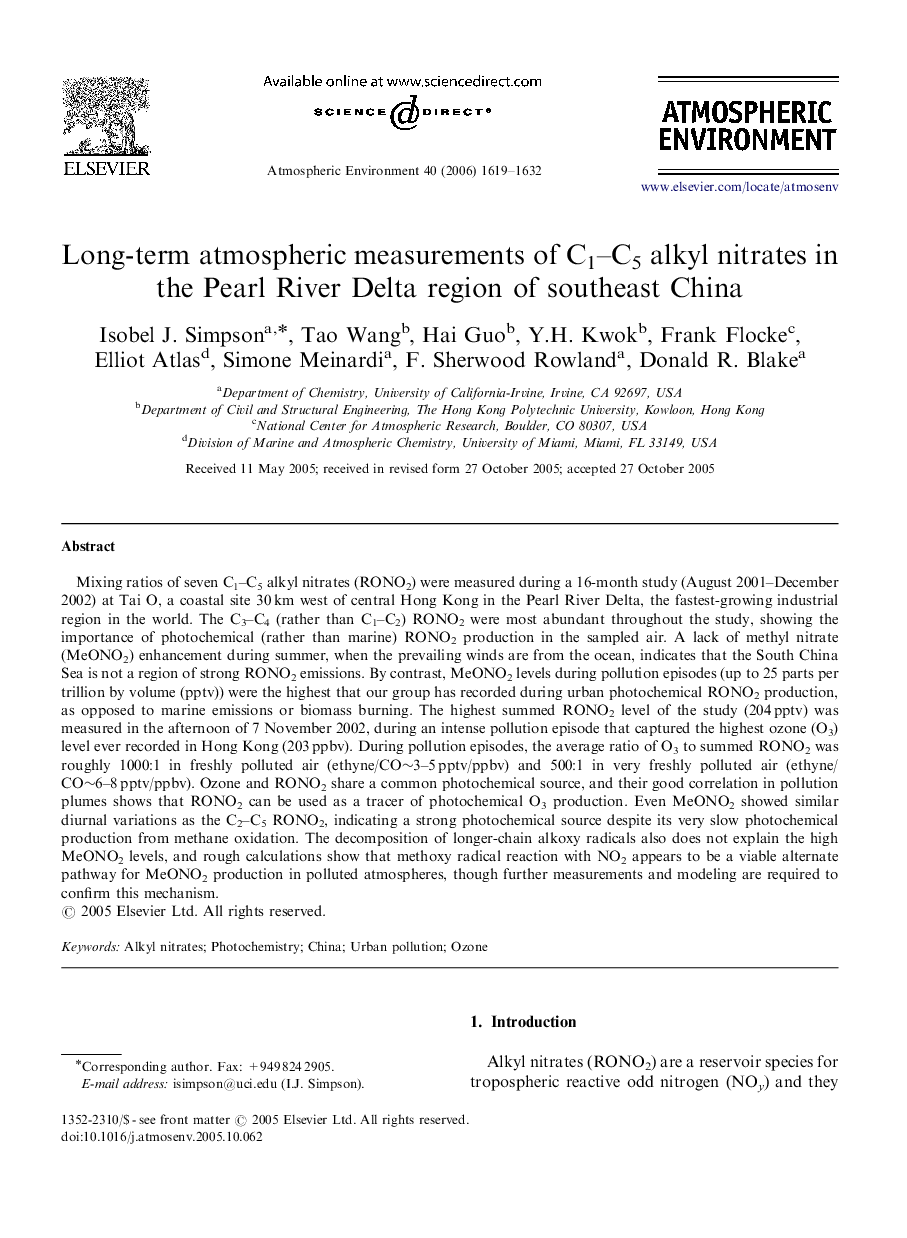| Article ID | Journal | Published Year | Pages | File Type |
|---|---|---|---|---|
| 4444566 | Atmospheric Environment | 2006 | 14 Pages |
Mixing ratios of seven C1–C5 alkyl nitrates (RONO2) were measured during a 16-month study (August 2001–December 2002) at Tai O, a coastal site 30 km west of central Hong Kong in the Pearl River Delta, the fastest-growing industrial region in the world. The C3–C4 (rather than C1–C2) RONO2 were most abundant throughout the study, showing the importance of photochemical (rather than marine) RONO2 production in the sampled air. A lack of methyl nitrate (MeONO2) enhancement during summer, when the prevailing winds are from the ocean, indicates that the South China Sea is not a region of strong RONO2 emissions. By contrast, MeONO2 levels during pollution episodes (up to 25 parts per trillion by volume (pptv)) were the highest that our group has recorded during urban photochemical RONO2 production, as opposed to marine emissions or biomass burning. The highest summed RONO2 level of the study (204 pptv) was measured in the afternoon of 7 November 2002, during an intense pollution episode that captured the highest ozone (O3) level ever recorded in Hong Kong (203 ppbv). During pollution episodes, the average ratio of O3 to summed RONO2 was roughly 1000:1 in freshly polluted air (ethyne/CO∼3–5 pptv/ppbv) and 500:1 in very freshly polluted air (ethyne/CO∼6–8 pptv/ppbv). Ozone and RONO2 share a common photochemical source, and their good correlation in pollution plumes shows that RONO2 can be used as a tracer of photochemical O3 production. Even MeONO2 showed similar diurnal variations as the C2–C5 RONO2, indicating a strong photochemical source despite its very slow photochemical production from methane oxidation. The decomposition of longer-chain alkoxy radicals also does not explain the high MeONO2 levels, and rough calculations show that methoxy radical reaction with NO2 appears to be a viable alternate pathway for MeONO2 production in polluted atmospheres, though further measurements and modeling are required to confirm this mechanism.
